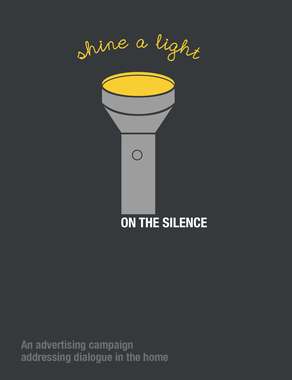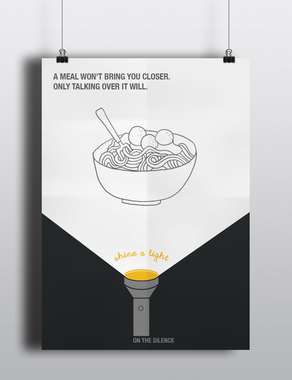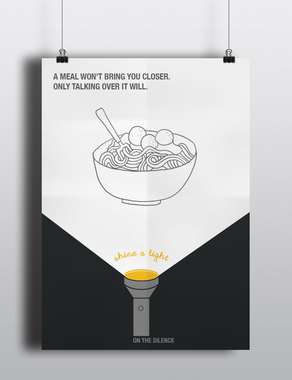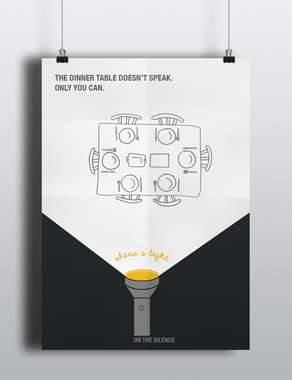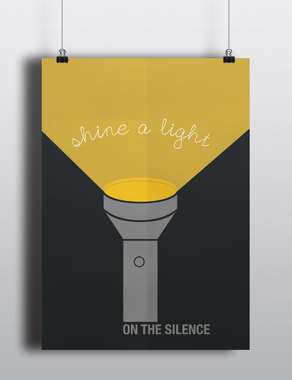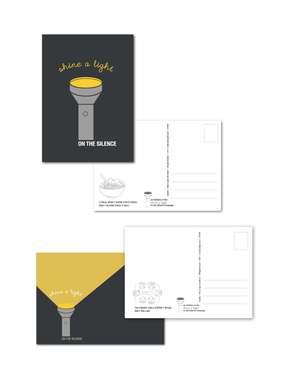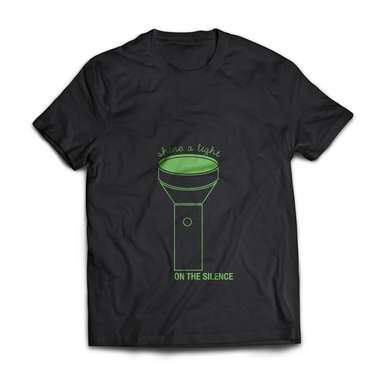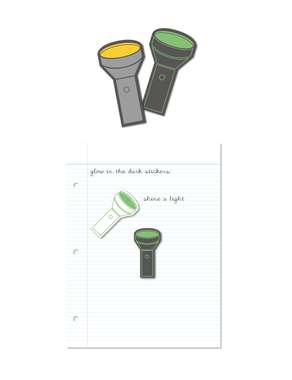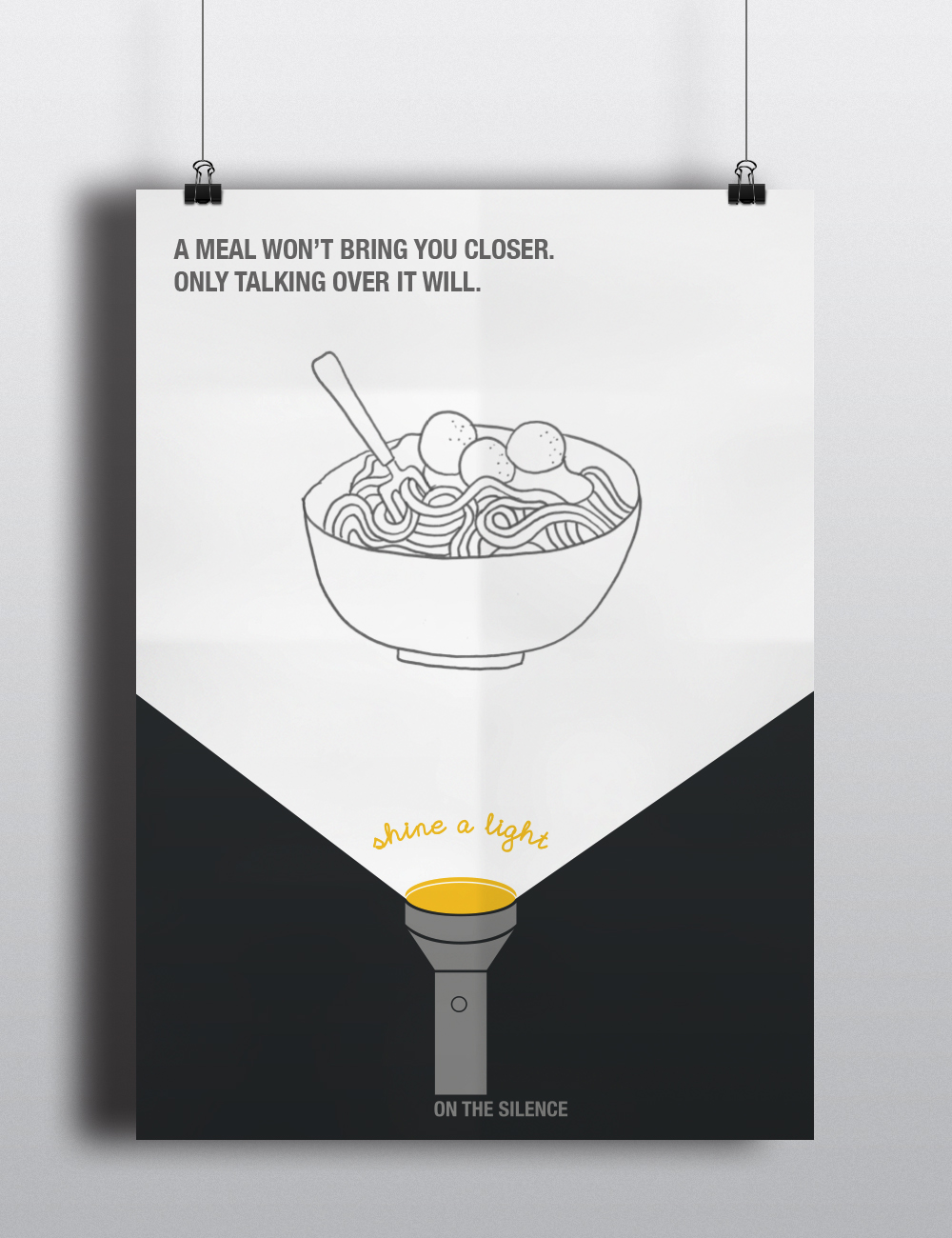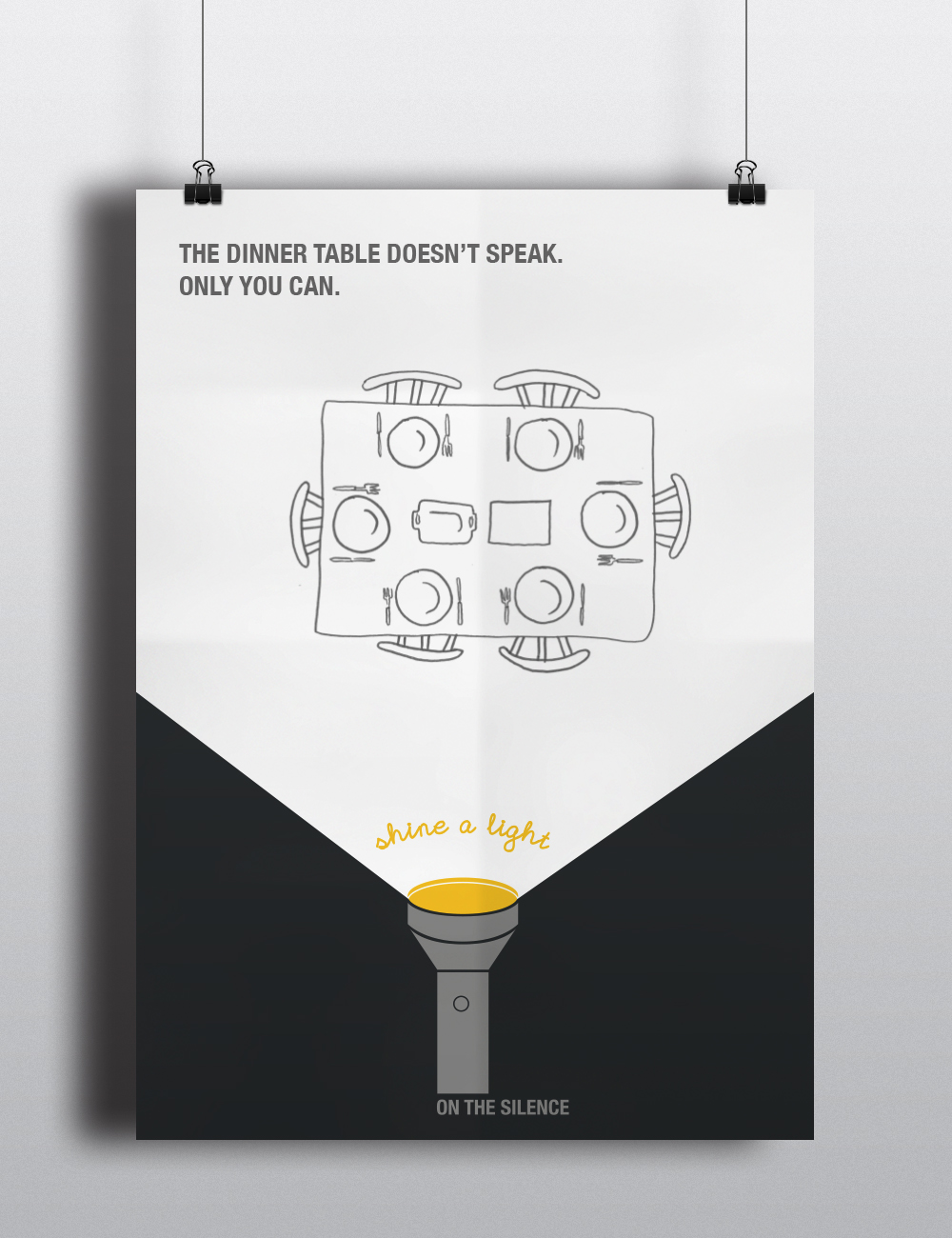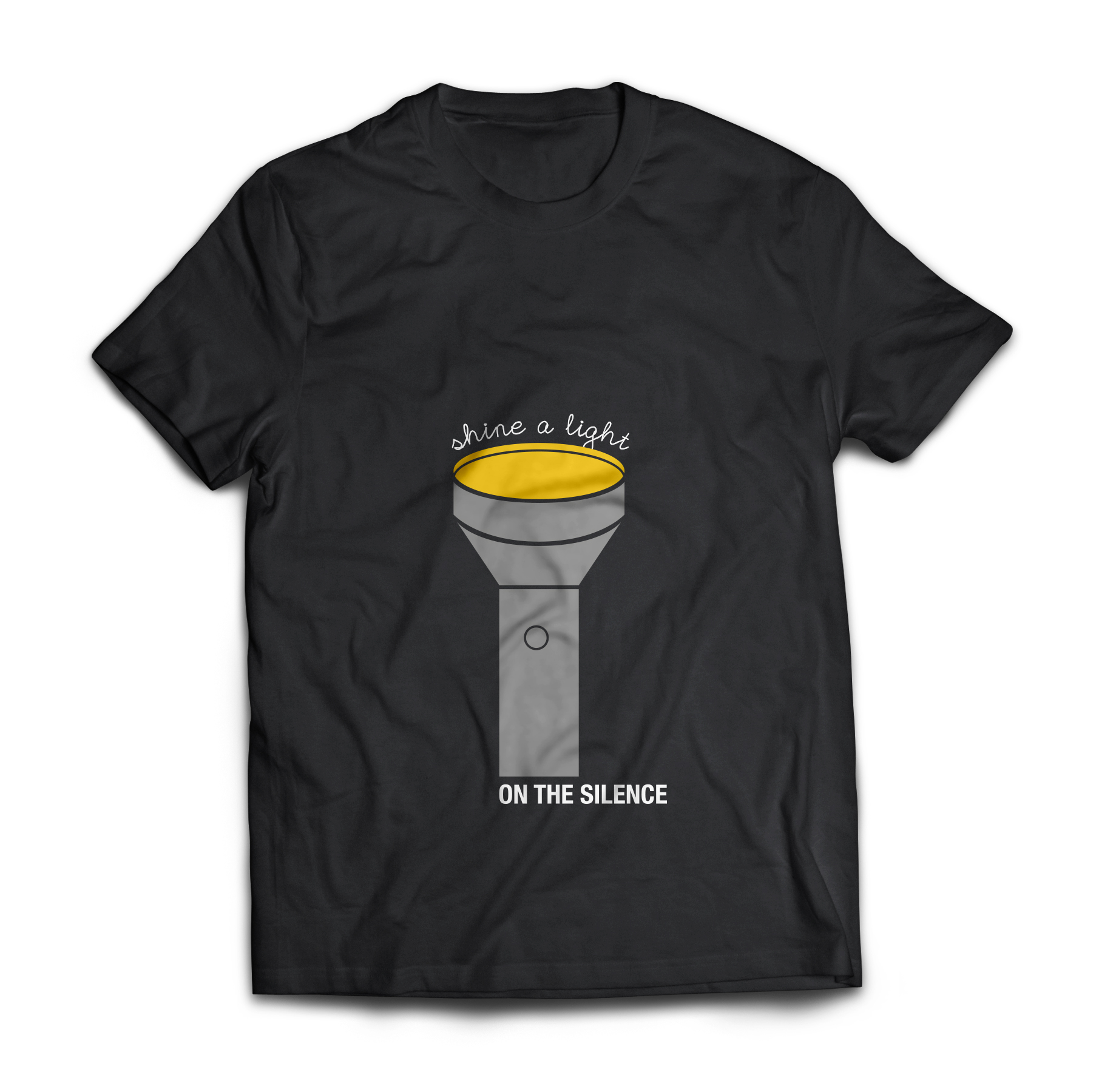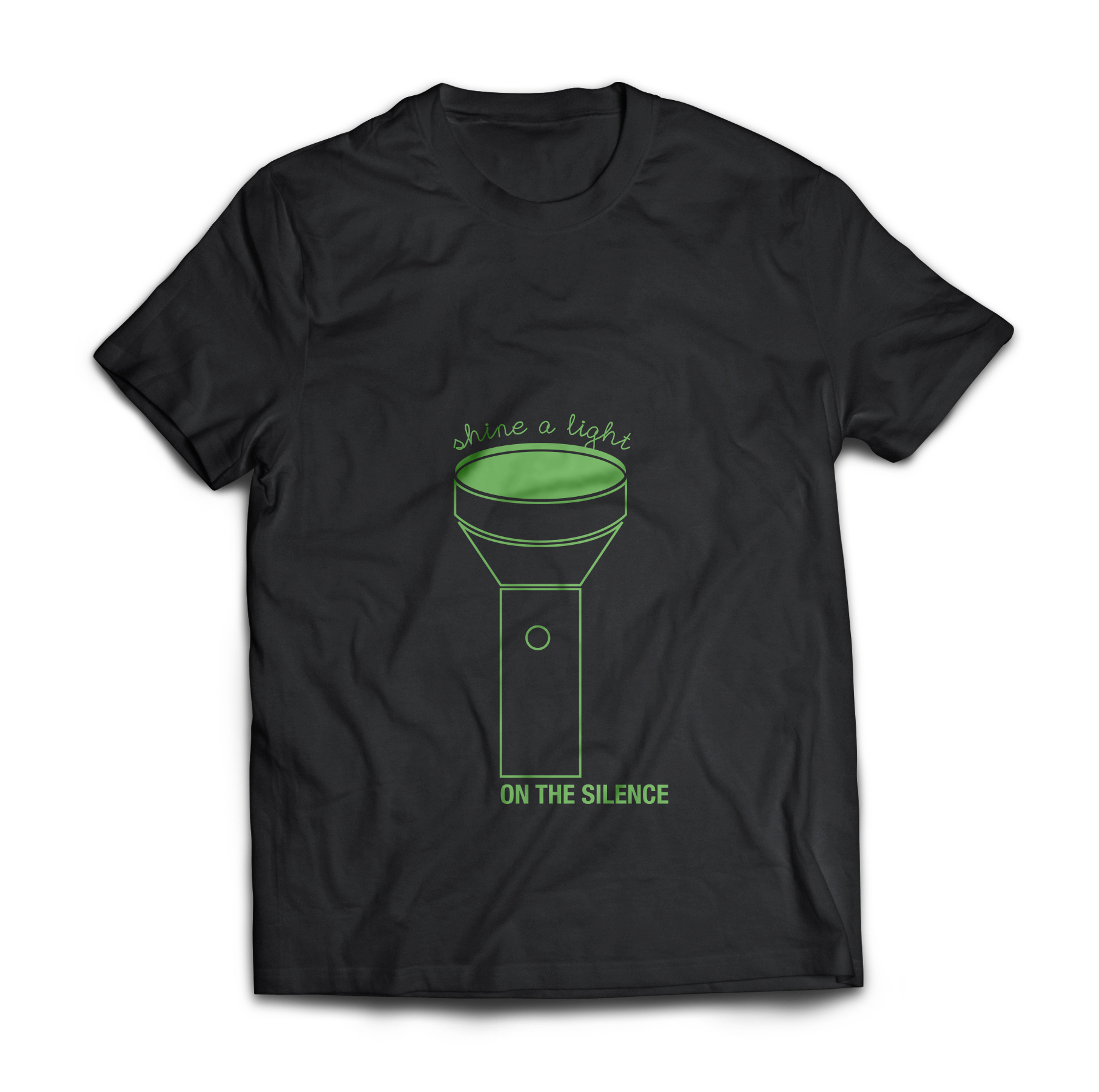Shine a Light on the Silence
This work has been commented by 1 curator(s). Read the comments
Title
Shine a Light on the Silence
Headline
Shine a Light on the Silence
Concept author(s)
Hilary Bruce
Concept author year(s) of birth
1993
Concept author(s) contribution
As author and designer of this work, I was involved in the entire development process of the project from concept to production.
Concept author(s) Country
Australia
Friendly Competition
Radical intimacies: dialogue in our times (2014)
Competition category
Visual communication practice
Competition subcategory
static
Competition field
academic
Competition subfield
student
Subfield description
Swinburne University of Technology
Check out the Radical intimacies: dialogue in our times 2014 outlines of Memefest Friendly competition.
Description of idea
Describe your idea and concept of your work in relation to the festival outlines:
If dialogue is failing, then shouldn’t the solution come from its source? The home is the place where dialogue is taught, nurtured, developed and practised. When these vital steps in the development of a child are missed, isn’t it obvious why dialogue is dying?
The aim of this campaign, therefore, is to highlight the effects that silence within the home can have on the relationship between parent and child, and how talking can mend the break. A simple yet overlooked message that needs to reach society if family relationships have any hope of surviving in the future. The way that the “Shine a Light” campaign aims to get this message across is primarily through a poster series, depicting typical family situations and associated objects. The aim of the posters is to highlight the fact that being in these situations does not necessarily mean that your family is building their relationships - there has to be an active effort within them to talk to one another. This is the way that intimacy grows.
A variety of supporting material is included in the campaign, which reiterates the main message of the campaign all with the aim of raising awareness. This support material includes postcard style flyers, which were chosen for their compact format and practical use. These postcards would be free promotional items that people can have the option of keeping and using for writing a letter at a later date. A tshirt series and promotional stickers are also part of the campaign, chosen for their aesthetic value with the aim of increasing the initial interest in the campaign. Both the tshirts and stickers are created using glow-in-the-dark ink. This again reiterates the message of “shining a light”, while also being a fun and quirky point-of-difference that keeps viewers engaged.
What kind of communication approach do you use?
The Shine a Light Campaign aims to solve this problem of silence through a communication approach that shifts the focus back onto the source of the problem, looking into areas within the home where dialogue is failing. With a generation currently growing up within a new, technologically advanced world, the generation gap continues to widen, something which has one of the greatest and most detrimental impacts on the relationships between parents and their children. A home without dialogue means broken relationships, as parents and children never build the intimacies that can only come from constant, meaningful interactions. When technology comes between the two generations, it becomes a barrier for dialogue.
What are in your opinion concrete benefits to the society because of your communication?
The main concrete benefit of my campaign is getting across a simple yet often overlooked message: that silence in the home should not be overlooked. This message needs to reach society if family relationships have any hope of surviving in the future.
What did you personally learn from creating your submitted work?
Working on this assignment and delving deeper into the problems that affect dialogue has made me realise how complex and intricate the human relationship really is, and how difficult it is to then convey this to an audience through an advertising campaign. Reaching the wider population with an advertising message, no matter how important that message is, will only work if the campaign is relevant to the audience and speaks to each person on an individual level.
This is something that I was really challenged to think about throughout the development of this campaign, to ensure that my message was relevant to a specific group of people.
Why is your work, GOOD communication WORK?
I believe that my work is good advertising design work because it does not simply address society as one large group, but instead targets a specific sphere of people within society, meaning the message is more relevant, the context is more appropriate, and the solution is more targeted.
Where and how do you intent do implement your work?
The implementation of the campaign will flow out of a decision to target parents, choosing a context that is relevant to them and their day to day lives. Print material for the campaign will be distributed to locations where parent’s are most commonly found: schools, daycare facilities, doctor and dentist surgeries, and selected cafés and restaurants. The owners of these businesses will then have the option to put up the posters where they like, and place the postcards on display. The tshirts for the campaign will be presented to selected tshirt companies and retailers, with the aim of getting the design into the retail market for the consumer to purchase and wear. There is a growing trend of tshirt companies that support social issues through their designs, meaning it is highly likely that the Shine a Light tshirt design would be positively received by a number of retailers.
Did your intervention had an effect on other Media. If yes, describe the effect? (Has other media reported on it- how? Were you able to change other media with your work- how?)
My advertising campaign was not intended to have an effect on other media.
Curators Comments

Alex Jordan
Dear Hillary Bruce
first please accept that my english is very bad (not in reading texts but in writing) so I try to give my best but I cannot go in deep grounds with my poor basical expressions.
"Bon Appetit":
"Don't speak with your full mouth3.
"First we pray, then eat without noise".
Maybe there are still some families where the silence reigns at table, so the idea is not bad. But the real problem is rather the global non-communication today. No?
I am designer and photographer and really I think that design is not form but support content and content has to be created before AND with formgiving. Including also in the same time (or at the end) questions about the spreading of the result, of the ideas intention. That's banal, No? Right. So I go once more back tothe origins of the silence, the luck of conversation, communication in human groups (families and others). as I can embrace all appearences I choose the dinner table, a group-meeting place and play special situations there. "The dinner table doesn't speak (EAT, CRY, SING, VOMISH...) only you can". Really you found
a good slogan, but why the lamp and a second slogan "shine a light on the silence?" because you have been tought so in advertising. In my mind it's too much. try it one time without all these artifivial illumination: print 4 T-shirts with
"The dinner table doesn't speak only you can" give them to 4 people, invite them
at table, with good food and drink...
Understand me well, I have nothing against the pocket-lamp and his slogan, the poster and the tee-shirt are right. my doubt is about your use of the lamp and the table in one image.
And really, you should make a little distance to publicity correct campaign mainstream celebration. Sure you don't need it.
sincerely
Alex Jordan

